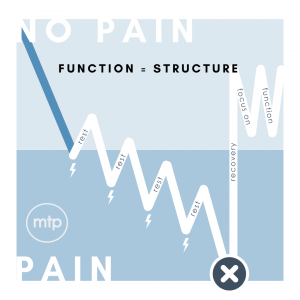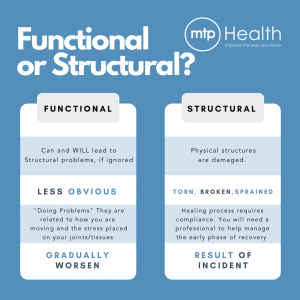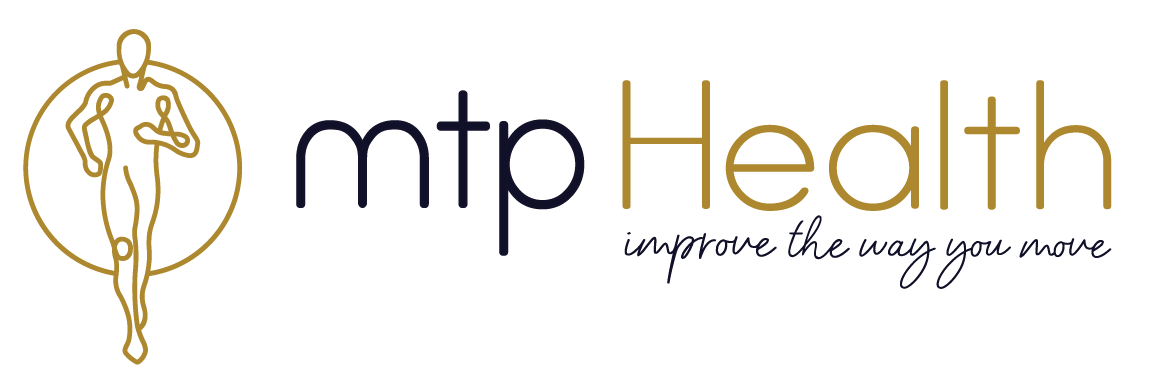Breaking the Cycle of Recurring Injuries [Part 1]
Do you have a pain or injury that just keeps coming back? That’s been on and off for so long that you now just think of it as part of your life?
Initially perhaps you thought that you might be able to shake it off quickly and get back to your normal routine, a quick visit to the Physio and they will make it better for you….. right?
When pain first pops up we want it gone as quickly as possible. It’s disruptive and annoying. However, most of the time when pain rears its annoying head it is just a symptom of what or how we have been doing things for a long period of time leading up to the pain. So just treating the pain and making the symptom go away doesn’t do anything to address the real cause of the problem. As a result, the pain comes back again, we get it treated again, we feel better and we go back to what we were doing, then after a while the pain comes back and so on and so on. See the pattern here? It’s an unfortunately common cycle and one that many “health care” businesses have done quite well out of – by promoting this treatment dependent cycle.
If this is where you are, it’s time to break this cycle and challenge the way things are done. So in this article we will outline how empowering health care practices, like Exercise Physiology, can help you truly recover and give you the tools to break the cycle of getting injured over and over again.
1. Awareness and the SAID principle
The human body is an amazing adaptation machine. It reacts, responds and changes to deal with whatever stresses we give it.
The S.A.I.D principle or Specific Adaptations to Imposed Demands, is a principle used in the fitness industry to explain the importance of exercise (or task selection) and how the more you train a specific demand (exercise) the better the body will adapt. This applies to most things we do as humans. Take brushing your teeth for example. Most people will do this without thought, we use the same hand and follow a similar pattern of brushing each time. We do it twice a day for our whole lives so we have strengthened the pathways that control these movements to the point where we don’t need to concentrate at all to do the task. However, if we are unable to use our normal hand due to injury and we suddenly need to use our non-dominant hand to brush our teeth, this previously thoughtless tasks suddenly takes concentration. The movement feels wrong, the order we brush is jumbled up and it all just feels wrong…. But within a week or two of practicing every day twice a day it starts to feel more normal, more smooth and ordered, less and less concentration is required to brush your teeth with the other hand. We adapt, our nervous system starts strengthening the pathways and the order of operation so we can complete this task of tooth brushing with less and less energy and effort. This is specific adaptation to an imposed demand.
There are abundant benefits of the amazing adaptation abilities of the human body and mind. But there is a downside.
The downside is that we form poor habits, poor patterns or less healthy adaptations just as easily (if not more easily) as the good ones.
So how does this apply to your recurring injuries?
Well, if you apply this SAID principle to your life, you will likely see a pattern of change as we get older, we used to run, play, swing, jump, roll, tumble, and climb all the time when we were young kids. We used our bodies in all directions, all the time. We were mobile, supple and felt invincible. Then when we hit high school, we start doing less of the playing and more specific activities and sports. We get told the best way to run, to jump, we get told to train more specifically for our sport activities and we spend A LOT of time sitting in school chairs, in cars, in buses, in trains and on the couch. So our bodies adapt and change to these specific demands. We tighten a bit in some areas of our body, we weaken in some areas. But we get a lot stronger and more capable with other things.
These changes happen slowly over time. Gradually shifting how we move and how the joints and tissues tolerate the stress that we place on them.
Then we finish school, we introduce work or university, driving cars, drinking alcohol, eating differently and even more changes happen. Very seldom do we tend to move in more diverse ways when we finish school. So the weaknesses continue to weaken and the strengths continue to strengthen. All this happens in blissful pain free ignorance. Other than our body shape, there is no obvious sign of changes that are occurring. Until one day we feel some “random” discomfort in our shoulder, back, hip or knee. We shake it off and carry on. The pain is minor so nothing worth worrying about. Right?
2. Structure versus Function
This is true. Those minor niggles and twinges are no big deal. But what they should be considered is a warning bell.
It’s a little alert from your nervous system saying “come on mate, give me a break I’m working too hard to make up for your weaknesses and I can’t keep doing this”…. But more often than not we ignore the warnings. We tell ourselves the pain wasn’t that bad, I’m not even sure you could really describe it as pain, it’s more annoying than painful. So I’ll be fine and crack on. If it gets worse then I’ll go see my [Physio, Chiro, Osteo], they will fix me up.
At this point our brain and our bodies have already started developing work arounds (compensations). Ways to work around the problem and carry on.

Each time we do this our functional capacity or our ability to move freely and efficiently takes a step down.
Why does this matter and what does it have to do with breaking the cycle of re-injury?
Well, thinking about injuries or pain as either a Structural problem or a Functional problem can help us know what it is we really need to do to recover and prevent future problems.
To start with let’s give a basic definition for how we delineate structural and functional injuries.
Structural Injuries:
One or more physical structures are damaged. Torn, broken, strained or sprained. Things like rolling your ankle, twisting your knee, falling on your shoulder – these are all acute examples of how you can have a structural problem. There is an obvious incident that resulted in the pain or injury to particular structures.
In the case of acute structural injuries there is a healing process that requires compliance. You will need to follow particular protocols and the physiology of healing needs to adhered with to allow for the tissues to recover enough to progress with the rehab process. You would want to see your trusted Sports Physician or Physiotherapist to help you manage the early phases of this recovery process.
Once the recovery process is completed then you can move to progressing the function and returning to normal activity.
Functional Injuries:
These are less obvious. Pain has very often bubbled up over time with no specific cause. Things just gradually worsened from random tweaks and twinges to more consistent pain or discomfort to constant annoying nagging soreness.
Functional problems are what we like to call “doing problems”. They are problems related to how you are moving and the stress you are placing on your joints/tissues as a result of how you do things rather than pain due to damage.
Now what is really important to keep in mind is that Functional Problems can and will lead to Structural Problems, if ignored.

How does knowing this help you?
Well you can’t address something if you don’t know it’s a problem. Very often people will seek imaging or scans to try to determine what is causing their pain and gain clarity about what is happening. And very often when a problem is functional there is no clear cause that shows on a scan. This can be disheartening and frustrating for the person, but when you know that it means your problem is functional rather than structural that is great news! Because improving your function is in your control, if a problem is structural it’s a little out of your hands.
3. Prevention is better than a Cure
Recognising your recurring injuries are related to your function, not a weak spot in your back or genetics or just the way you are, is a very powerful position to be in. You can change. You can apply the SAID principle to your movement and change the narrative of your pain and injury cycle.
Rather than simply chasing pain relief by treating symptoms and looking for what is wrong with the structure (or which structure is the problem) you can start working on improving your movement to change your life.
So now you know that in order to break the cycle of re-injury you need to have a specific approach to addressing the weak links. You know that treating the pain isn’t really changing why the pain is there in the first place. And you know that more often than not, your injuries have been a byproduct of long term changes and compensations. To stop the cycle you need to address the function.
At MTP we have been working with people for nearly 10years using this exact approach with the aim of empowering people to improve the way they move.
In part 2 of this article we will break down the 3 simple steps you (or your health care professional) should go through to create lasting functional change.
The MTP difference
Here at MTP Health, we believe that focusing on the pain site isn’t always the best way to do things. Just because you don’t feel pain after getting injured and going through the recovery process, it doesn’t mean that you’re entirely better.
We have expertise in diagnosing why you are always getting injured, and our dedicated team of Accredited Exercise Physiologists will provide unique techniques, specific exercises, and a progressive plan specifically tailored to help you manage your injury and improve your overall health. We’ve also developed a rehab exercise plan targeting your unique strengths and weaknesses.
It has always been our priority to improve your movement, strength, and performance along with improving your general health.
You can book an appointment with us to ensure your program is always adapted exactly to you.
MTP Online Programs for you
Let’s get started on the journey towards an empowered, optimally healthy, injury-free life.
Whether your focus is regaining your confidence doing your daily activities, building strength and movement, or building reactive power, strength and control, we have an online program suitable for your needs.
Start your journey to stay healthy, avoid pain and injury, and improve the way you move with our Online Programs. Check out our programs today!
Find this article helpful? Leave us a comment! We’d love to hear from you.
